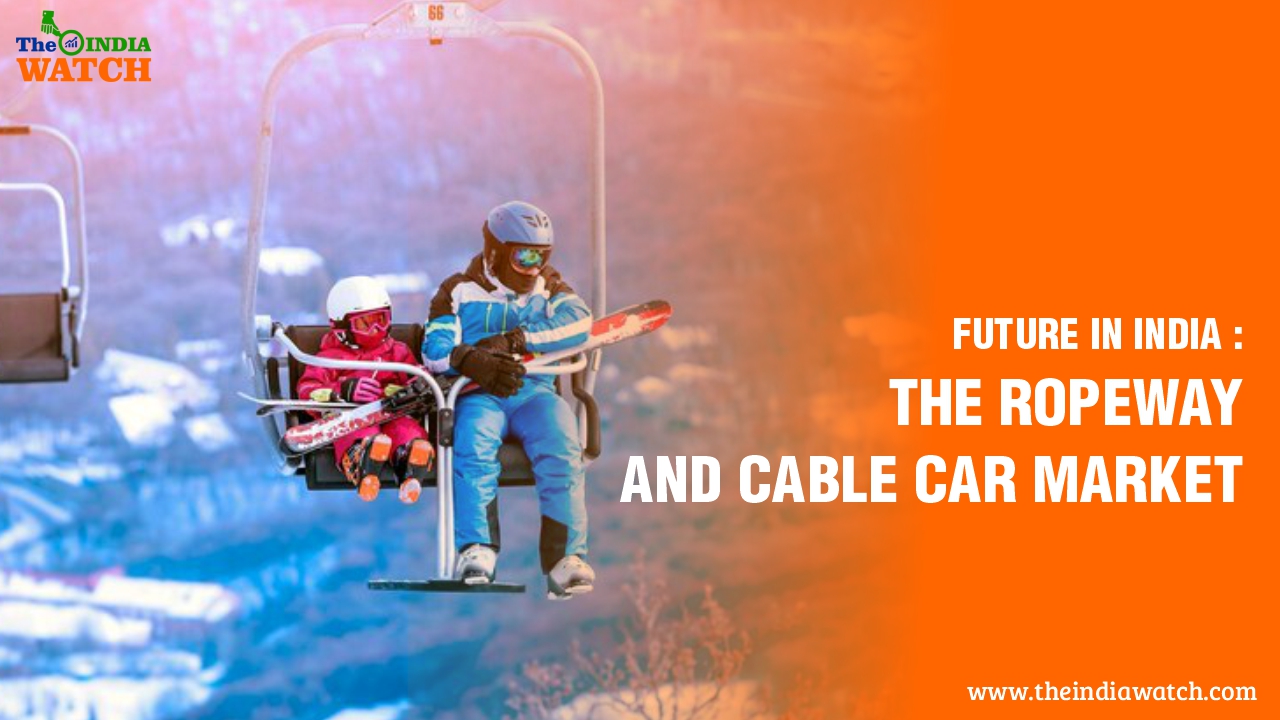-
Your trusted market research partner
- info@theindiawatch.com
- 8076704267

The Ropeway and Cable Car Market is set for a Promising Future in India
The first ropeway in India was developed in the 1960s, when it was used to carry sand to the coal mines. The public application of the ropeway started in the 70s. However, in recent years, ropeways are slowly and gradually taking off from a niche industry to a more popular mode of public commute. Recent years have seen a host of ropeway & cable car projects in India across hilltop temples, mountainous terrains, and other remote locations.
The central and state governments in India are mulling Ropeway as a faster, economical, and environmentally friendly mode of commute. They are thinking of building more ropeway projects. While their role in offering last-mile commutes in the remote locations of India is unquestionable, ropeway and cable cars can also play a pivotal role in offering seamless connectivity in high-traffic regions in modern Indian cities.
In the western cities, the ropeway is a popular mode of transport and on similar lines government to planning to implement such projects in the high-traffic regions of Ghaziabad, Noida, Gurgaon, etc. In 2018, it was proposed to build ropeway projects to develop feeder lines for the metro corridor. (However, the project did not materialize thereafter)
Factors that can fuel the growth of the Ropeway and Cable Car Market in India
Aerial Tramway or the Ropeway & cable car market in India is poised for robust growth. There are numerous factors that can drive the growth of the ropeway industry in India.
- The ropeways are a greener and more sustainable mode of transport with no direct pollution involved. It consumes less power than other modes of transport.
- It is beneficial in linking challenging mountainous terrains and remote locations. Already there are successful ropeway projects in Tawang, Digha, Guwahati, Raigadh, Manali, Gulmarg, Haridwar, etc.
- Ropeway and cable cars can be used in linking villages with districts in the remote Himalayan region and North Eastern states, where construction and maintenance of roadways are cumbersome, expensive, and at times not feasible.
- As discussed above, plans are underway to introduce ropeways and cable cars in the remote congested urban centers, where developing mass transit systems such as suburban railways or metrolines are difficult.
- Ropeways can conveniently navigate through steep gradients. It also enables travelers to observe the natural beauty all around. Hitherto MDG technologies have been primarily used. However, there is a great potential for 3 S technology that can result in mass commute.
- Ropeways need limited space for stations and transit pillars and the cable can easily pass through built-up areas, which is added advantage in using it for mass commute in congested urban corridors.
- Ropeways are also economical as compared to metro lines. The cost of developing a Km of elevated metroline in India is around USD 19-25 million. Meanwhile, the cost of developing a Km of the ropeway is USD 9.5- 15.7.
- There is minimal land acquisition involved in the ropeway project in contrast to roadways and metro corridors that require a substantial cost of land acquisition.
- The governing agencies in India are also committed to catapulting Ropeway into a popular mode of mass commute. The National Highway Logistics Management Limited (NHLML) a part of NHAI has been entrusted with the task of planning and implementing ropeway projects in the country.
- In the recent budget for FY 23, GOI announced the Parvatamala project under which 8 new ropeway projects will be built (~ 60 Km) in Uttarakhand, HP, North Eastern states.
Meanwhile, there are also technological and legal hurdles that can undermine the growth of ropeway projects in India. The GST in ropeway is much higher (18%) compared to aviation (12%) and railways (5%). Likewise, it is also a niche industry with the scope of overall revenue limited compared to other mainstream transport and logistics businesses. To further expedite the adoption of ropeway as a successful mode of commute, all the stakeholders including central and state governments, local governing agencies, and contractors have to think cohesively.

How The India Watch can Help?
The India Watch is a leading market research, business information, data & insights provider. We work with corporates, family businesses, PE investors, trade promotion agencies, and industry bodies to offer them custom-made market research solutions.
We work with a range of sectors including but not limited to infrastructure & real estate, retail & FMCG, industrial manufacturing, agribusiness, and much more. Our range of services include
- Conducting market surveys, qualitative interviews, stakeholder interviews, etc. to get valuable information and keep a pulse on the latest market trends.
- Prepare project impact studies, project reports, etc. on infrastructure projects.
- Prepare feasibility studies to verify the viability of proposed projects, investment ideas, new product & service launches, etc.
- Prepare tailor-made market studies based on both primary and secondary research, as per the needs & requirements of the client.
- Offer valuable information and data on a wide range of categories, which include but not limited to industry & market sizes, market share analysis, demand forecasting, distribution & retail structure, regulatory policies, and much more.
- For any further information, drop us a mail at info@theindiawatch.com


